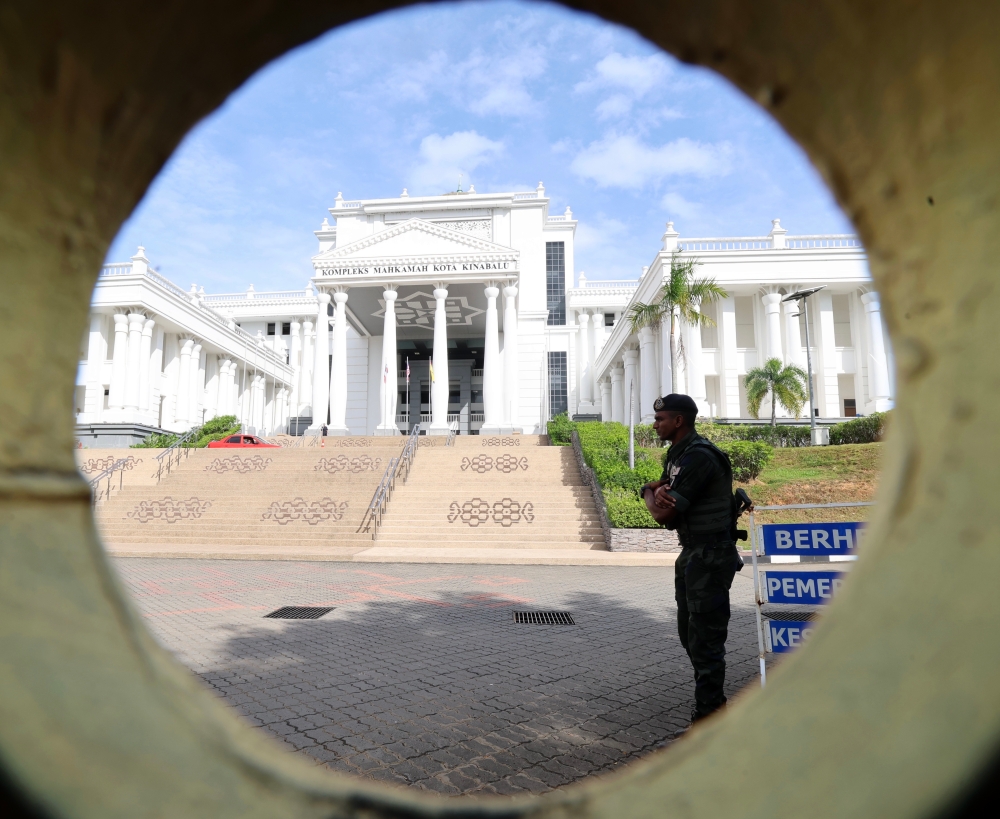
Pathologist tells inquest Zara Qairina’s injuries consistent with fall from height but unlikely from being pushed or accidental slip

Forensic pathologist Dr Jessie Hiu was the first witness in the inquest of Zara Qairina Mahathir’s death.
Wednesday, 03 Sep 2025 4:09 PM MYT
KOTA KINABALU, Sept 3 — A forensic pathologist told the inquest today that student Zara Qairina Mahathir’s injuries were consistent with a fall from height, but said it was unlikely she was pushed or accidentally fell while standing on the third-floor corridor.
Dr Jessie Hiu, the first witness to testify, said her site examination found that the corridor’s concrete rail and metal bar on top measured almost three-quarters of Zara’s height, making it improbable she toppled from a standing position beside the railing.
“Based on the height and width of the concrete railing, the height of the horizontal metal rails and the deceased’s antemortem height, it is possible for her to climb onto the concrete railing, cross over the metal rails and stand on top of the concrete railing,” she said in her statement.
Dr Hiu was among the pathologists who conducted the post-mortem after Zara’s body was exhumed on August 10.
After detailing the extent of her injuries in a 19 page autopsy report and a witness statement Dr Hiu said their distribution was consistent with a fall.
“Reconstruction based on the injuries indicates that the deceased landed on her left foot, followed closely by the right, resulting in more severe injuries to the left heel and leg bones (comminuted fracture of the left calcaneum, comminuted fracture and oblique fracture of the distal left tibia).

Lawyers Sherzali Asli (left) and Nurul Rafeeqa Afdul Mutolip, representing Zara Qairina’s father as an interested party in the inquest into her death, pictured at the Kota Kinabalu Court Complex.
“Following the impact, she fell backward, predominantly onto her left side, sustaining injuries to her left wrist, left forearm, left elbow and the back of her head.
“The force generated upon landing on her lower limbs was transmitted upward, leading to fractures of the fourth to the second lumbar vertebrae associated with psoas muscle haematoma and a localised retroperitoneal pelvic tissue haematoma,” she said.
The court was shown autopsy photos from the exhumation.
On July 16, Zara was rushed to Queen Elizabeth Hospital at 4.38am in critical condition with a Glasgow Coma Scale score of three out of fifteen, indicating severe brain injury.
“She was unconscious. A trauma alert was activated at 4.42am. She was assessed and managed by multidisciplinary teams.
“Clinical examination, CT scans and radiographs revealed a scalp haematoma at the vertex, intracranial bleeding with brain swelling, hypoxic ischemic encephalopathy, fracture of the distal left radius, dislocation of the left wrist joint, bilateral comminuted fracture of the distal tibia, an open wound on the left ankle, fracture of the distal third of the left tibia, dislocation of the ankle joints, comminuted fracture of the left calcaneum, fracture of the second to fourth lumbar vertebrae, left psoas muscle haematoma and extraperitoneal pelvic tissue haematoma,” she said.

Police stand guard outside the Kota Kinabalu Court Complex during the inquest into the death of Form One student Zara Qairina Mahathir. — Bernama pic
Zara succumbed to severe traumatic brain injury with hypoxic ischemic encephalopathy the following day at 1.07pm.
When questioned by Deputy Public Prosecutor Datuk Badiuszaman Ahmad on whether the distribution of injuries suggested chronic physical abuse, Dr Hiu said no.
She explained that assault cases usually leave injuries scattered across the body and in different stages of healing, unlike Zara’s grouped injuries which matched two mechanisms of a fall: direct impact on landing and deceleration causing internal bleeding, particularly in the brain.
“The distribution of the injuries are consistent with a fall on landing on the feet,” said Dr Hiu.
She said direct impact trauma is caused upon landing typically causing fractures. In this case the direct impact trauma on both lower limbs. The deceleration injury are due to movement of the body and the internal organs. Once the body landed on the ground there is sudden deceleration but internal organs are still moving resulting in injuries.
“In this case the bleeding on the brain due to stretching and tearing of blood vessels due to sudden deceleration. In chronic physical abuse the mechanism of injury is only direct trauma,” she said.
Dr Hiu also told the court that she had asked Zara’s mother Noraidah Lamat to point out injuries she saw on her daughter’s body.
Court was adjourned at around 4.30pm.
Dr Hiu is the first of some 68 witnesses expected to be called during this inquest. She is expected to be called again tomorrow for questioning.
Zara’s death has gained nationwide attention for allegations of improper handling of the investigation and bullying.
Public outrage has pressured authorities into holding an inquest into her cause of death while five teenagers from her school are also facing bullying charges.
No comments:
Post a Comment